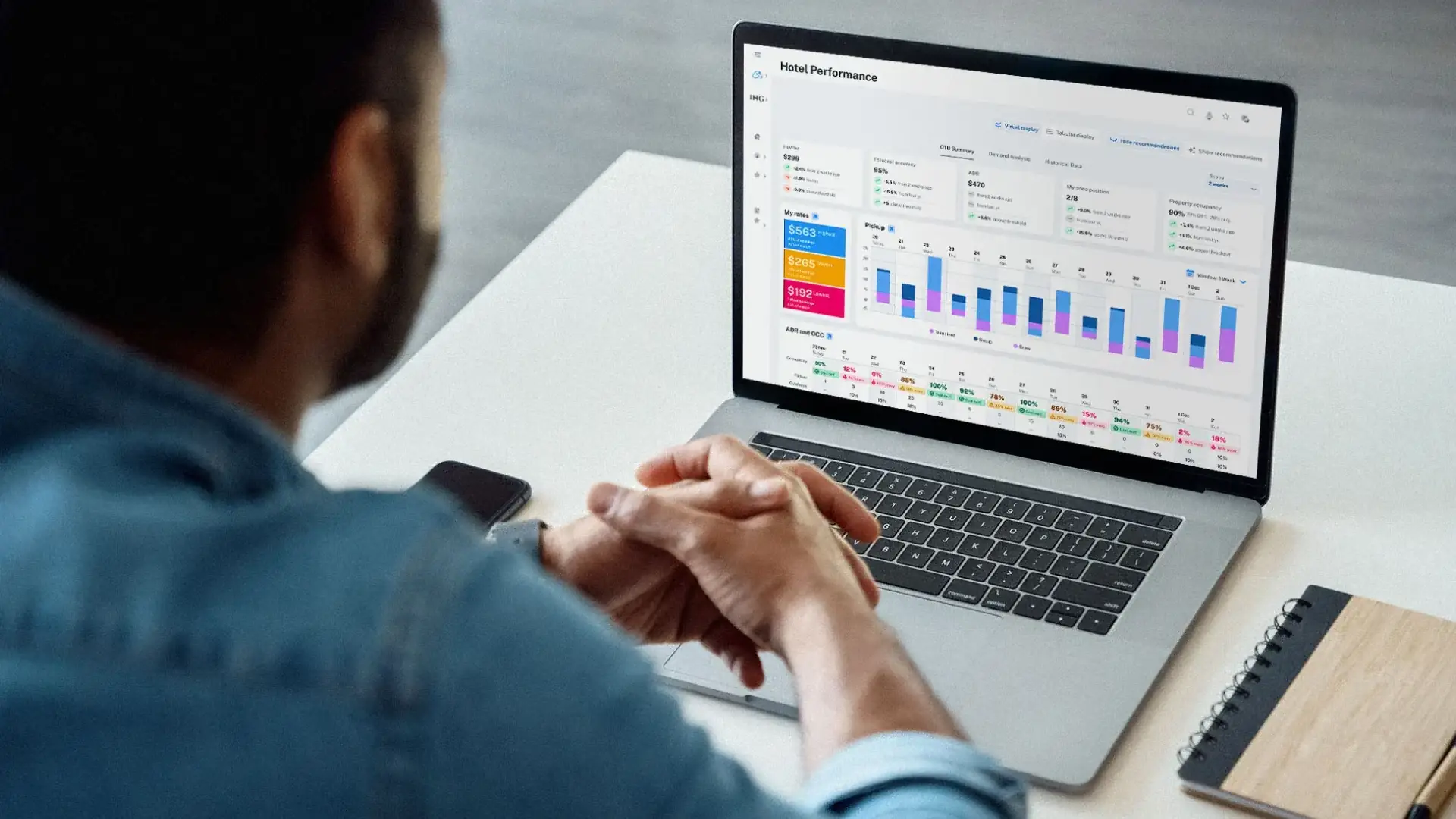As hotel owners and operators wrapped up 2023 budget season and turned their attention to the ongoing forecasting process, let’s dive deep into the right portfolio-wide analytics that will help owners and operators make sense of a dynamic forecasting environment.
Earlier parts of the series helped identify the right demand, booking pattern, and consumer behavior data to shape your 2023 forecast. Now it’s time to share those baseline forecasts across the organization.
Centralizing data from each of your properties to help make smarter business decisions at the corporate level has become a priority for all owners and operators across the globe. As your forecast changes on weekly and even daily basis, you’ll want to provide leadership with easily accessible and digestible reports in real time.
Here’s how a few of today’s forward-thinking hoteliers are sharing easily digestible information with key stakeholders across their organizations:
“At a property level, the ability to look really granularly quickly is helpful. At an enterprise level, the ability to quickly look at macro level trends by aggregating all that data quickly is probably the most beneficial,” says Cecil Hopper, director of revenue optimization for Miraval Resorts by Hyatt.
James Wilson, Director Business Intelligence and Analytics Services at Outrigger Hospitality Group, deploys a similar strategy.
“A lot of my senior executives want to make sure we're trending well in comparison to years past, that we’re going to achieve our forecasted and budgeted goals,” he says. “Versus my property teams, they want to go down to the geo level, the zip-code level, the room-type level. Having a tool to assist with leveraging that data is very beneficial.”
At Sea Island Resort, Director of Revenue Management Billy Copelan takes pride in the fact that he’s built his own custom reports and scheduled them to send each morning to a leadership group. “I love building my own reports,” he says. “Everybody's looking at them on a daily basis to really keep the pulse on what's happening at our property, particularly what bookings are coming in, what our business is looking like for the future, how we're pacing against previous years, things like that.”
Success Story: Bringing Data to Life
Mandarin Oriental Hotel Group over the past several years has undergone a transition from using Excel spreadsheets to keep all stakeholders informed to more advanced Business Analytics that provide a better understanding of the business and the data behind it. Leadership was looking to move from traditionally viewing historical reports to a more predictive environment where they could use forward-looking data to help identify impactful business trends.
In 2019, Mandarin Oriental partnered with Otelier to build a data visualization strategy that would prove to be a framework for all departments to rely on when making decisions. Bringing Mandarin’s data into PowerBI via Otelier helped them unlock insights into their own business that they never had before. “The way the data was organized and structured matched the way I worked, matched my Excel brain, and I became a super user really quickly,” says Sofia Baglini, Commercial Insights Manager for MOHG.
Today, Mandarin Oriental leadership uses analytics to drive innovation in areas like F&B and spa revenue management. Analytics are assisting even in the areas of design and construction, helping determine how large spa outlets should be and how many tables to include. Data is analyzed to better understand the voice of the customer and justify ROI on implementing guest-facing technology across all outlets. MOHG will continue to explore personalization – tools like bluetooth-enabled in-room dining trays that alert housekeeping when they’ve been placed outside and personalized channel lineups on the in-room TV – to provide a better guest experience. Now they have the data to measure the impact.
“We have come a long way,” Baglini says. “We’ve improved the quality of the data on the backend and implemented [Otelier] to put it into action on the front end.”











